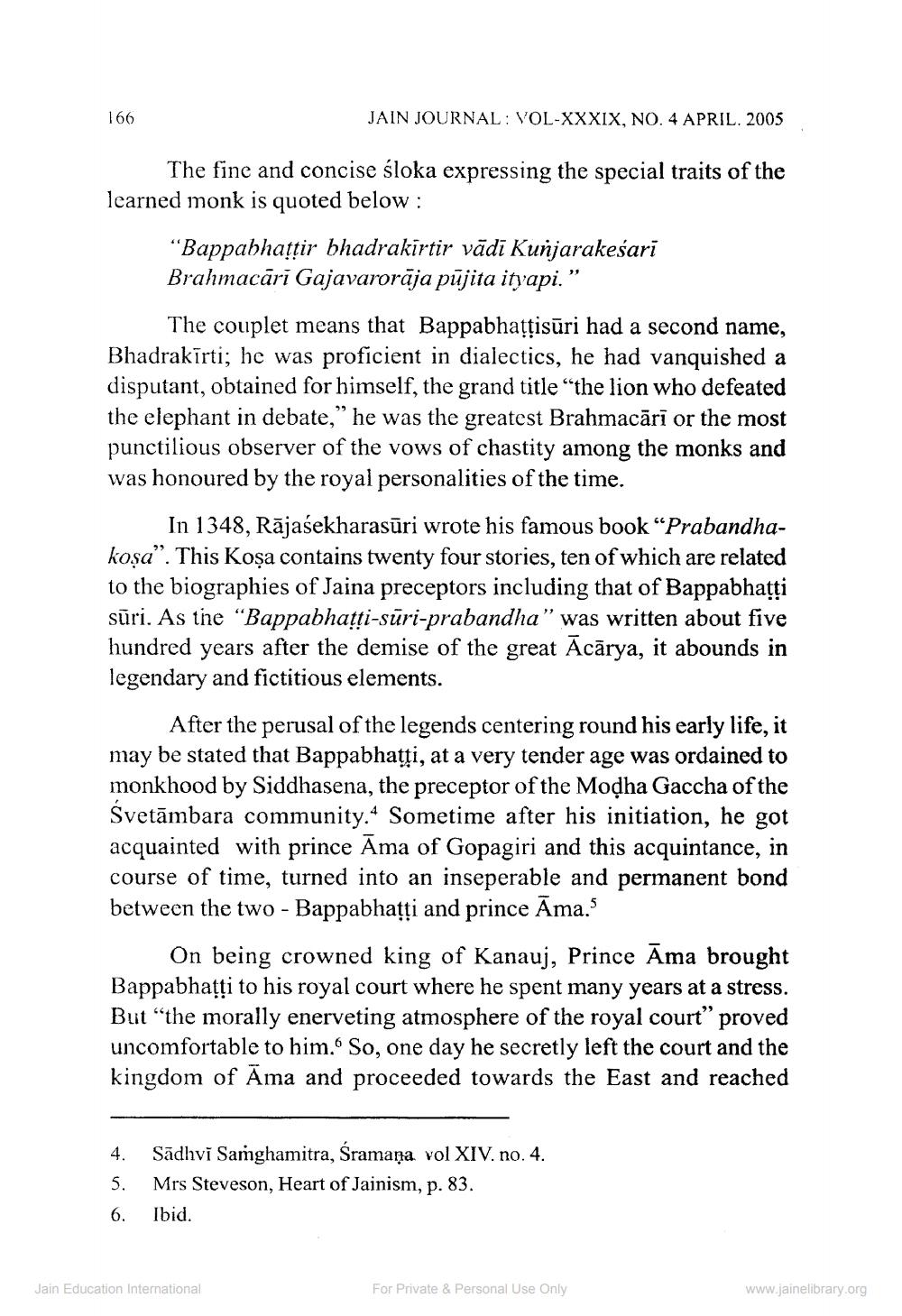________________
166
JAIN JOURNAL: VOL-XXXIX, NO. 4 APRIL. 2005
The fine and concise śloka expressing the special traits of the learned monk is quoted below :
“Bappabhatțir bhadrakirtir vādi Kunjarakeśarī Brahmacāri Gajavarorāja pūjita ityapi.”
The couplet means that Bappabhațțisūri had a second name, Bhadrakīrti; he was proficient in dialectics, he had vanquished a disputant, obtained for himself, the grand title "the lion who defeated the elephant in debate,” he was the greatest Brahmacārī or the most punctilious observer of the vows of chastity among the monks and was honoured by the royal personalities of the time.
In 1348, Rājasekharasūri wrote his famous book “Prabandhakoșa”. This Koşa contains twenty four stories, ten of which are related to the biographies of Jaina preceptors including that of Bappabhatti sūri. As the “Bappabhatti-sūri-prabandha” was written about five hundred years after the demise of the great Acārya, it abounds in legendary and fictitious elements.
After the perusal of the legends centering round his early life, it may be stated that Bappabhatți, at a very tender age was ordained to monkhood by Siddhasena, the preceptor of the Modha Gaccha of the Svetāmbara community. Sometime after his initiation, he got acquainted with prince Ama of Gopagiri and this acquintance, in course of time, turned into an inseperable and permanent bond between the two - Bappabhațți and prince Āma.
On being crowned king of Kanauj, Prince Ama brought Bappabhațți to his royal court where he spent many years at a stress. But “the morally enerveting atmosphere of the royal court” proved uncomfortable to him. So, one day he secretly left the court and the kingdom of Āma and proceeded towards the East and reached
4. Sadhvi Samghamitra, śramaņa vol XIV. no. 4. 5. Mrs Steveson, Heart of Jainism, p. 83. 6. Ibid.
Jain Education International
For Private & Personal Use Only
www.jainelibrary.org
www.jaineli




